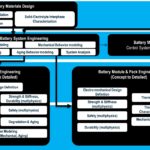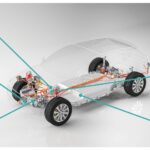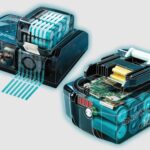In a video, EE World spoke with a power-supply applications engineer about why RV batteries use such high voltages and how to test them.
Batteries are perhaps the most expensive component of an electric vehicle. Typically producing 800 V to 900 V, batteries deliver the power needed move the vehicle. Of course, EV batteries need testing so assure auto makers and drivers that they deliver the expected power.
As with any battery, measuring its performance requires a load. Vehicles — the battery’s load — also need testing to simulate the battery’s output under simulated conditions. EE World spoke with Russ Gaubatz, senior applications engineer at EA Electro-Automatik about testing automotive power systems.
Why do vehicle batteries produce such high voltages? Delivering power at a high voltage results in less current passing through a vehicle’s bus bars that at low voltages. That reduces size, weight, heat, and materials cost, things that are important in vehicles. Smaller, thinner wires weigh less and cost less than heavier gauge wires.
What about safety with such high voltages in a vehicle? Gaubatz said “High-voltage batteries are quite safe. They’re shielded and insulated. In the event of a crash, fire departments are trained to disconnect certain plugs to disable the voltage to the entire car.” Current is the danger. To highlight the difference, Gaubatz compared grabbing a lawnmower spark plug — which might have 10,000 V but produces a few milliamps — to connecting yourself to a 12 V car battery that can produce the hundreds of amps needed to start a car.
All Li-ion batteries degrade with time and respond differently to temperature. In the video, Gaubatz explains that at high ambient temperatures, an EV battery’s resistance increases, thus reducing the power it can deliver. In cold temperatures, a battery-management system typically has a charging profile that warms the battery when it’s charging. A fluid holds the battery’s temperature within a specified range. Without that, the battery may need several minutes to reach full power. Vehicles are subject to a four-season test in a chamber that verifies how the battery will perform.
Gaubatz explains that battery manufacturers perform tests to find a battery’s capacity. Testing might involve charging a 100 A-hr battery at 20 A for five hours plus some extra time for topping off. Then, the battery rests for at least 30 minutes before discharging. A typical discharge test lets the battery discharge at 20 A for five hours. All the while, voltage measurements keep track of discharging.

Power supplies use a constant-power curve to alter voltage and current in a way that keeps power constant.
Gaubatz also explains a Direct Current Internal Resistance (DCIR) test. While such tests vary among manufacturers and even among engineers, the test is based on charging, say, a 100 A-hr battery and then discharging it at 200 A for 5 sec. A voltage measurement provides a basis for a resistance calculation on the battery. A second DCIR test involves a discharge pulse.
Simulating a battery often involves a power curve. At 17:11 of the video, Gaubatz explains how EA Electro-Automatik uses a constant-power curve when discharging batteries in a test. The curve keeps the power constant (30 kW in the example) for different voltages and currents.
The video concludes with a discussion of how to configure a test setup or test facility.






Tell Us What You Think!